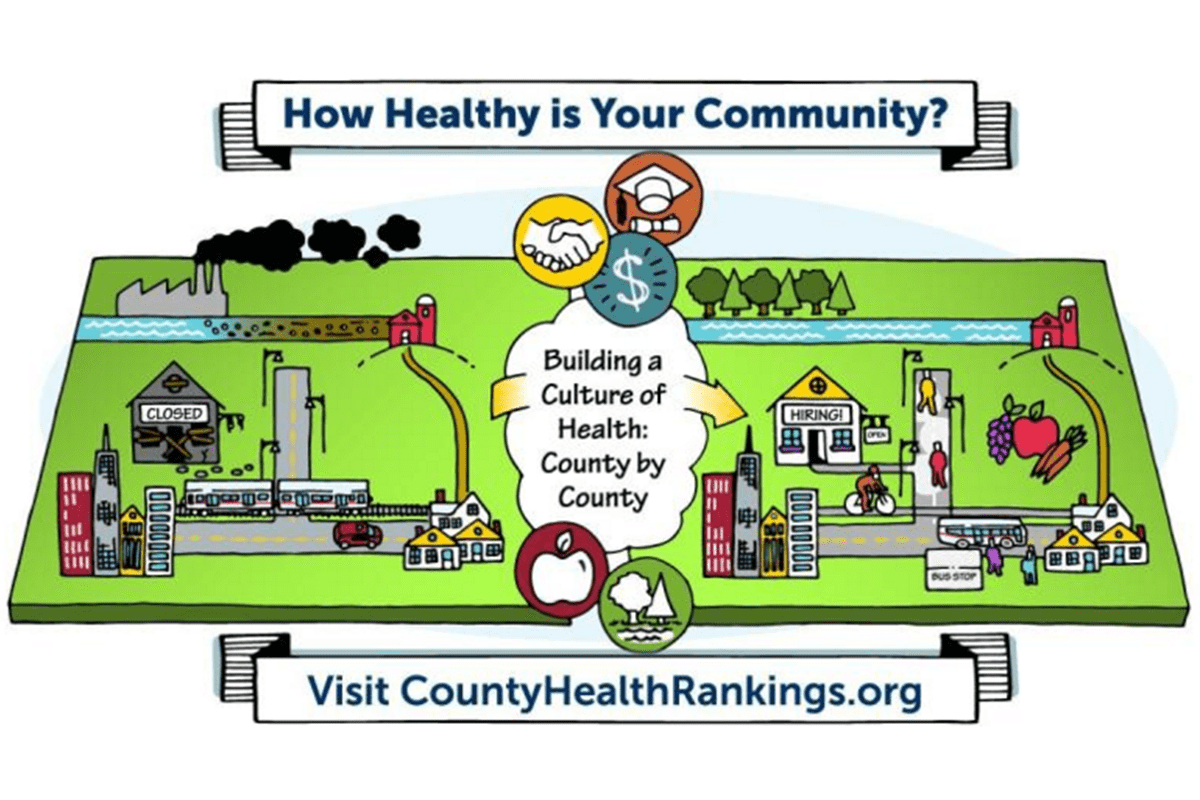2016 County Health Rankings Spotlight Rural Health Concerns and More
By Jacqueline Bond, March 24, 2016

Year after year, the County Health Rankings, a collaboration of the Robert Wood Johnson Foundation (RWJF) and University of Wisconsin Population Health Institute (UWPHI), reveal that your address influences how long and how well you live. Where you live matters, and the 2016 County Health Rankings put a spotlight on the fact that not everyone has the same opportunity to be healthy.
Take rural counties for example. You might think someone who lives in the open, fresh air of the countryside and away from urban areas would find it easier to be healthy, but that’s not always the case. In fact, this year’s Rankings found that rural counties have higher rates of premature death, lagging behind their urban counterparts who actually saw improvement.
Bridget Catlin, Co-Director of the County Health Rankings program summed it up when she spoke to Ben Schiller at Fast Co-Exist: “One in five rural counties is seeing worsening premature death rates rather than improvements,” says Catlin. “There’s no one single factor we can attribute this to, but access to jobs, health care, quality education, adequate housing and lack of public transportation all come into play.”
And that’s not all. Rural areas have higher rates of smoking, obesity, child poverty and teen births—not to mention high numbers of uninsured adults. That’s a problem when one in six Americans live in rural areas. (See this CNN story for more.)
This year’s Rankings also looked at other interesting health-related measures like residential segregation, drug overdose deaths and insufficient sleep. Here are the key takeaways:
- In areas where black and white residential segregation is highest, there are vast differences in health, well-being, opportunity and quality of life. Blacks and Hispanics who live in segregated neighborhoods have lower housing quality, higher concentrations of poverty, and less access to quality jobs and education.
- Drug overdose deaths have increased 79 percent nationwide since 2002 and are reaching epidemic proportions in parts of the U.S. “This is a problem that is hitting a lot of places, and a lot of people from all walks of life,” Catlin told CNBC. But, as she explained to TIME magazine, there are some simple ways to curb these deaths, including making sure emergency personnel are trained in the administration of Naloxone, which can reverse the effects of an opioid overdose before the patient dies. At the same time, says Catlin, “an epidemic with this many faces will require just as many solutions.”
- Are you getting enough sleep? There’s a good chance the answer is no. One in three adults don’t get enough sleep – less than 7 hours a night—and the highest rates of insufficient sleep were found in the Southeastern U.S., while the lowest rates were in the Plains states. Catlin explained to Huffington Post that when you have lots of people struggling to make ends meet and maybe working a couple of low-paying jobs, that leads to stress, and there’s just not time to sleep. Lack of sleep is tied to higher levels of stress and depression, hypertension, heart and kidney disease, motor vehicle accidents and suicide.
Don Schwarz, a vice president of RWJF, spoke to Atlanta’s NPR station about the new measures. He highlighted the importance of a holistic approach to improve health and well-being.
The good news is communities across the country are working to improve their rankings—and, more importantly, the lives of their people—by providing more and better options for employment, transportation, housing, childcare and schools, and healthy eating. Some of the most innovative places will be honored with the RWJF Culture of Health Prize later this year. We can’t wait to meet them and share their stories with you—stay tuned!
Learn more about the new factors and check out where your county ranks at www.countyhealthrankings.org.
